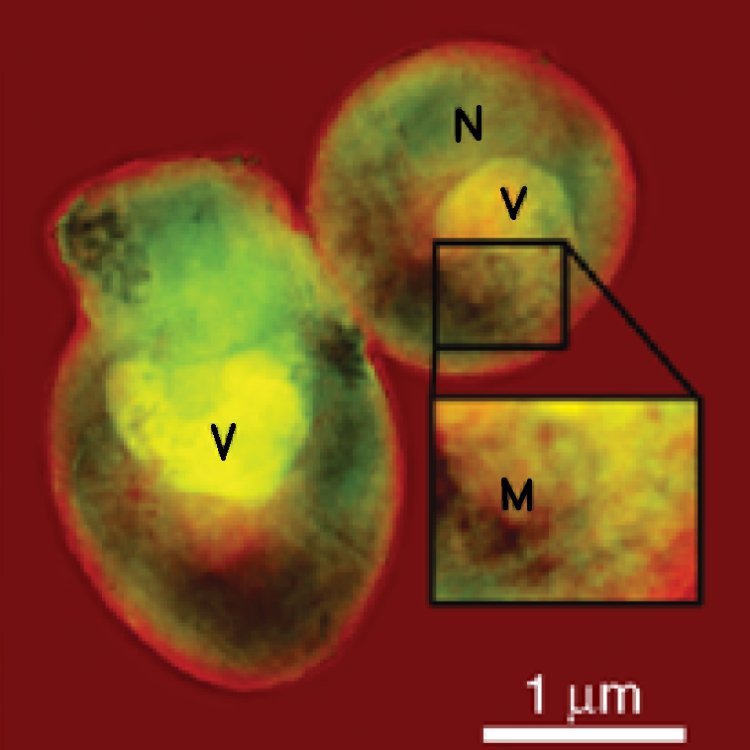-
Viewpoint on 'IONS'
Viewpoint on 'Scientific Literacy'
- Proudly sponsored by
-


Cells through X-Rays
Optics & Photonics Focus
Volume 9 Story 7 - 30/6/2010

Optics & Photonics Focus
Volume 9 Story 7 - 30/6/2010
An x-ray view on a yeast cell
By employing lensless x-ray diffraction microscopy, this image of a group of yeast cells has been acquired with a resolution of ten nanometers — approximately the length of 50 water molecules in a row. This is the highest resolution ever obtained with this method for biological samples. In this image the letters represent possible structures of the cell, such as vacuoles (V), mitochondria (M), and nucleus (N).
Courtesy of Johanna Nelson.
[read full story]
